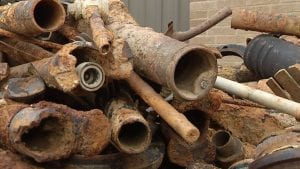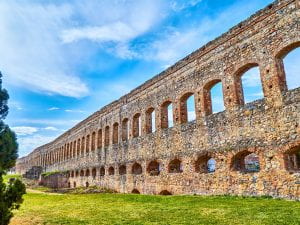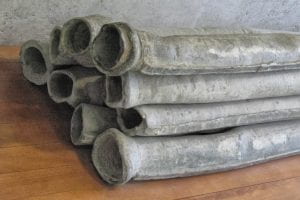Fresh clean drinking water is a basic human right. Most every town and city in the United State of America offers their citizens access to fresh, safe and clean drinking water. Unfortunately for a long period of time this could not be said about the city of Flint, Michigan. During my interview I was able to interview an Assistant Superintendent. During which time I realized how drastically different he was from the leaders of the Flint water system at the time of the crisis. The Superintendent was kind and he was very passionate about keeping his town’s drinking water clean. Then I asked him if he thought his town could ever experience a crisis like that of Flint he very confidently replied “No I do not. We take extra precautions to make sure our town’s water is safe at all times.” If only Flint had cared about their citizens as much as he does. On the topic of future generations I asked him what steps his town takes to create a sustainable future for drinking water and he responded “Keep up to date and make sure we work hard to promote green ideas. Make plans towards the future. The worst thing we can do is be conservative and let our water system get out dated. If we keep up to date I believe we will be successful as far as sustainability goes.”
The modern form of a water system is designed to promote safe clean drinking water for a large area. The water supply is usually taken from one large source such as a reservoir, river, or a lake. The water is pumped from the source of fresh water into some sort of treatment plant and then only after being treated for pollutants does the water end up in peoples homes. Flint’s water source was the contaminated Flint river. This water should have been treated for pollutants such as e coli and lead. The corrosive water taken from the Flint river was not treated and led to the severe corrosion of lead pipes. The corroded lead pipes poisoned the water.
There is a specific process that is done at each water treatment plant to ensure safe drinking water. This process also helps make sure to vastly reduce the risk of corrosion. The water in a typical treatment plant begins with the process of Coagulation and Flocculation where the particles in the water are formed into larger particles which are then sent into another chamber where the sediment particles called floc then settle to the bottom this is called sedimentation. The water moves on to the next step where it is then filtered.(Hancock)
Shown above are the corroded lead pipes used in Flint’s water system. If Flint had treated the water at a water treatment plant before the water was distributed to the public, the pipes may not have corroded so terribly.
Shown above is a Roman Aqueduct. These systems used underground pipes and above ground bridges which harnessed the power of gravity to move the water. These ancient water systems were created in the centuries leading up to and after the birth of Jesus primarily between the years 312 B.C. to A.D. 226.(Roman Aqueducts)These were massive architectural and engineering undertakings that could take 500 years to complete. These aqueducts could transport drinking water from up to 57 miles away. Although Romans had the most advanced irrigation systems of the Ancient world they were not the first. Ancient civilizations dating back thousands of years before Christ including Mesopotamia, Egypt and Ancient Greece would strain their water through mesh or they would boil their water to make sure of the purity. (The History of Water Filtration)Water purity has therefore always mattered as a critical part of a striving healthy civilization (Aqueducts)
Over time water systems advanced and the water became more pure. Shown above are some of the countless lead pipes that the Romans used In their aqueduct systems to transport drinking water. The Romans used Lead in the pipes for their aqueducts which is now universally frowned upon due to the harmful health effects that led causes such as high blood pressure, kidney diseases, and loss of hearing. Some of the worst effects of lead exposure impact kids from when they are a fetus and during their development into children sometimes stunting growth and brain development. (Denchak, Melissa) Flint Michigan’s lead pipes are what led to their crisis. Flint’s water system was very outdated and in some ways ancient. With the water treatment plants now used in most cities in the world. Flint’s error seems careless and heartless to the citizens affected by the terrible decision to use the highly polluted and untreated water from the Flint River.
Clean drinking water is a necessity for a healthy life. Accessibility and quality should be Flint’s best solution to a more sustainable city must start with improving their water quality for all citizens. Some innovative plans we found in an article called Imagine Flint. This article listed some policies the city has made to move forward. The Environmental Features Plan. The Infrastructure and Facilities Plan, Land use plan, Green neighborhoods. The quality of life as you will see in the various pages on this website will educate you on how Flint Michigan severely affected their citizens quality of life by pumping toxic waste into their showers and sinks. This led to poisonings and diseases as well as Long term health effects that will never go away. People died as a result of lazy people trying to cut corners and save money at the expense of lives.




